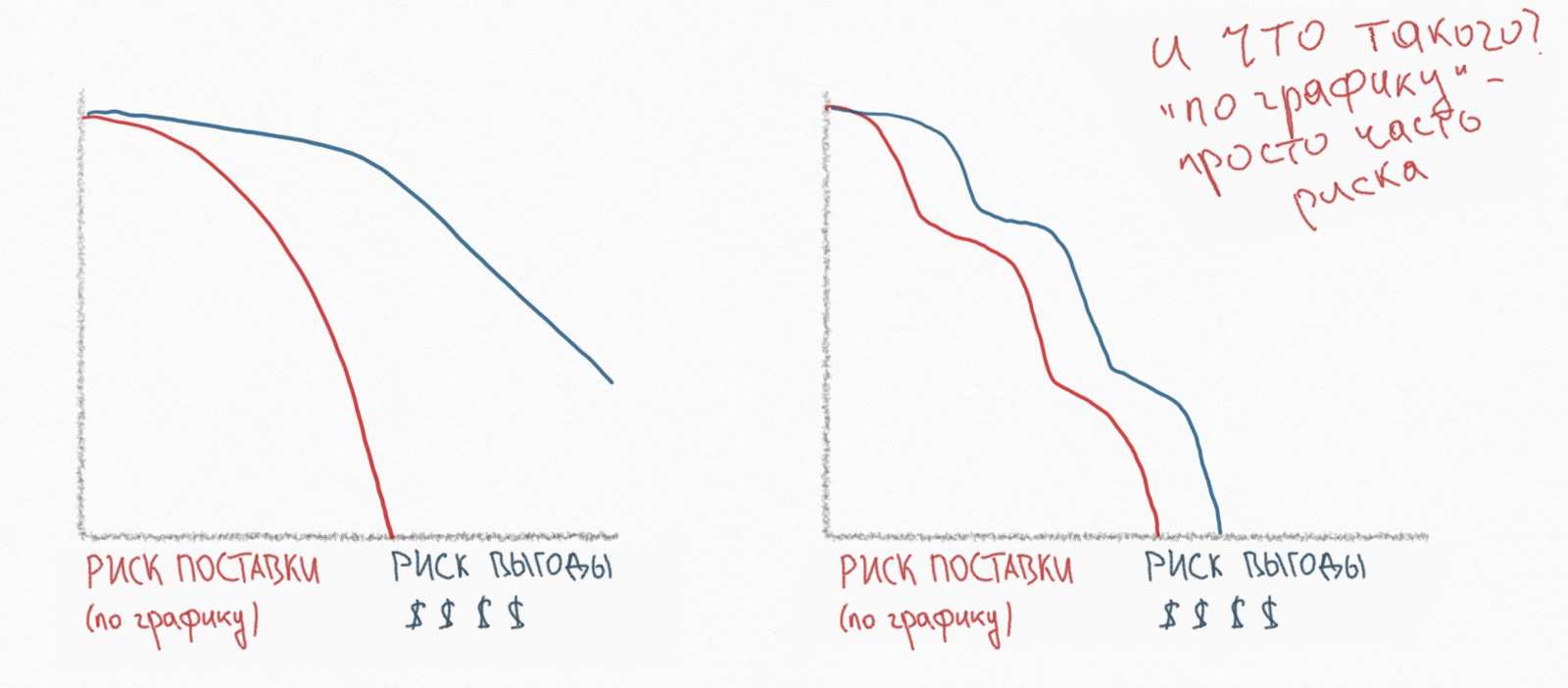Why Agile sometimes does not work

A couple of years ago, I went to see a relative. My poor cousin (and he is the CEO of an insurance company) was sold an Agile silver bullet — but it didn’t work, and he was very upset:
It's all nonsense! We started doing something completely different. We invited consultants. We hired special project managers. Did not work! Nothing changed. No one is responsible for anything. I hear only excuses.I do not remember what I answered then, but I know how I would answer today. I would jot down a few pictures, without a word of Agile. I would have to explain to my cousin a few basic concepts ...
Transferred to Alconost
1. Process efficiency
First, if you look at the development time - the time elapsed from the moment the idea appeared to the moment when its implementation reached the customers - you will notice that “waiting” takes most of the time. A 15% efficiency factor (actual work time / development time) is normal. Sounds weird, huh? But let's take a closer look at what seems to be in sight: the actual amount of time is spent on actually doing the work. For the best companies, this figure reaches 40%. In general, to speed up development, you need to reduce the “waiting” time.
')

2. Unplanned work and multitasking
The usual thing is when 75% of resources go to unplanned work and switching between tasks. The team may not even understand that everything happens that way. This is literally “overhead”, which is often not even tracked in task accounting systems. Most likely, the team complains about this state of affairs (as it is terribly annoying), but if these complaints are ignored for a long time, people just accept the gloomy reality as a given.
And now let's imagine this as one of the “combined services” within the company: the team is responsible for solving problems in an already working product (or deploying new infrastructure) - and at the same time is busy working on “projects”. Suddenly, we have a bottleneck.
Morality. Consider the sources of unplanned work and calculate the economic consequences of the provision of “shared services”. These services have an obvious meaning, but often they push for costly pre-planning.

3. Small, medium and large
There is such an interesting technique: we will draw on the schedule the execution of large, medium and small “work items” of the project, and then we will try to rise to a higher level and focus on what has actual value for the client (and not on tasks). We note that in many organizations the “volume” of work does not determine the time it is to be completed. This is because a number of other circumstances affect the duration of the task (dependencies, unplanned work, a lot of unfinished work, etc.).

4. Realization of commercial benefits
A lot of effort is spent on reducing what I call the “delivery risk” - this is when you make projects to order, and the client pays for the work upon delivery of the finished product. In the case of SaaS (software as a service) we are not paid for the fact of the work done - the commercial benefit increases with time. I call this the “commercial profit risk” (the risk that the work will be commercially worthless).
Large organizations often implement a methodology of agile development, but do not see the expected increase in commercial benefits. The reason is that development, of course, goes faster, but it does not affect 1) making the right decisions on products and 2) working on the implementation of what gives commercial benefit. ALL MEANING Agile Techniques - risk reduction. In terms of working on a project, risk is determined by the performance of work on a schedule and the provision of a given functionality. The same risk in terms of a product is expressed like this: “This thing doesn’t work a damn thing!” Therefore, the customer cannot agree to “accept” some function if there is no commercial benefit from it.
Many companies use the model shown on the left. In some - the model on the right. And when, as a result of the work, something foul-smelling turns out, they try to push more work into the system, but this only makes it worse.

5. Unmanaged complexity
And the last. Take a familiar and understandable reference function and navigate it through the product development system. If you do not use the methods of complexity management, refactoring and automation, every year the development of a project will take more time to implement this function - even if the development team remains unchanged. Surely you have come across the fact that sometimes you can spend a month and a half on something that previously required three days.

Agile
Now let's talk about “flexible development”. The Agile methodology is useless if it does not serve as a catalyst for continuous improvement — the same goes for the Scrum methods and the SAFe framework. The fact is that the slowdown is only partially due to the fact that you use “sprints”, record “user histories” or release demo versions every two weeks. And I can argue that the above makes a relatively small contribution (this becomes clear if you get the idea of gradually reducing the risk).
Adhering to a flexible development methodology means spending a lot of money and effort on the following:
- Do what really matters (commercial gain). Do less.
- Automation, implementation of tools, deployment pipeline, feature management (feature flags), etc. (DevOps).
- Change management culture.
- Revision of funding initiatives. Transition to phased funding based on goals and objectives and refusal to finance projects.
- Resource allocation for complexity management (regular refactoring and revision of project architecture).
- The distribution of value streams and the approach to the company as a serving ecosystem.
- A new understanding of “shared services”.
There is no "silver bullet" - you need to work. And beware of those who say otherwise.
About the translator
The article is translated in Alconost.
Alconost is engaged in the localization of games , applications and sites in 68 languages. Language translators, linguistic testing, cloud platform with API, continuous localization, 24/7 project managers, any formats of string resources.
We also make advertising and training videos - for websites selling, image, advertising, training, teasers, expliners, trailers for Google Play and the App Store.
Read more: https://alconost.com
Source: https://habr.com/ru/post/340900/
All Articles